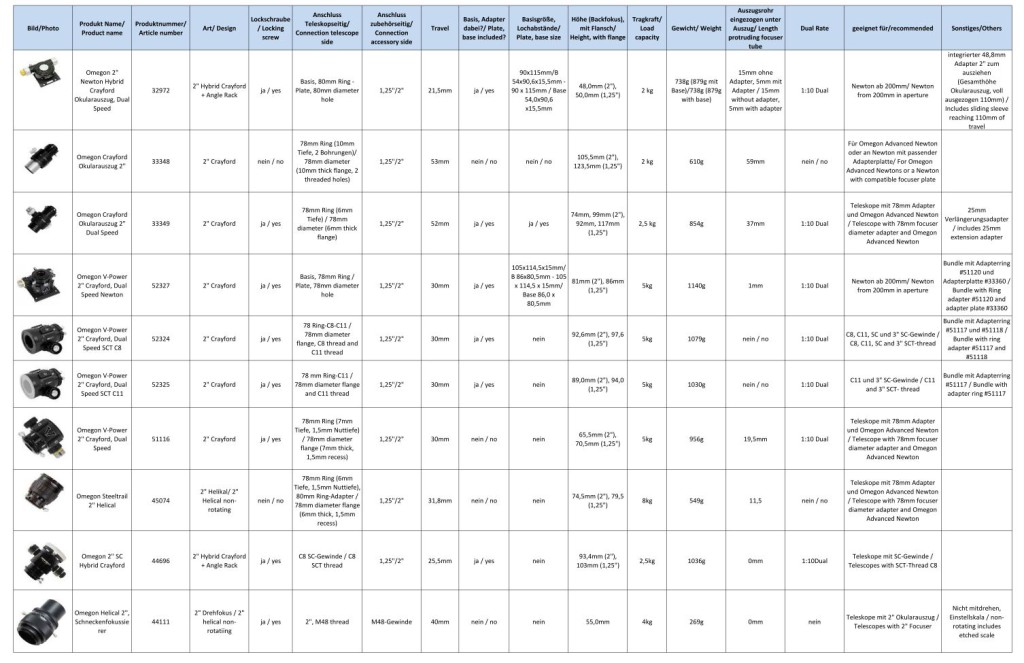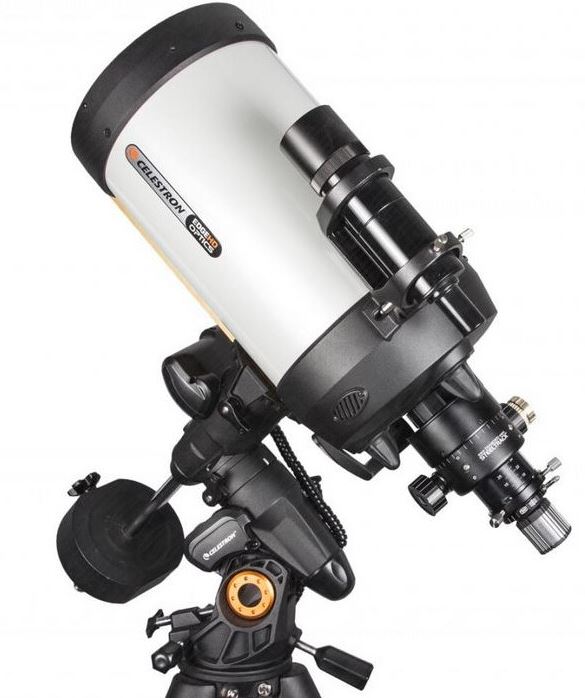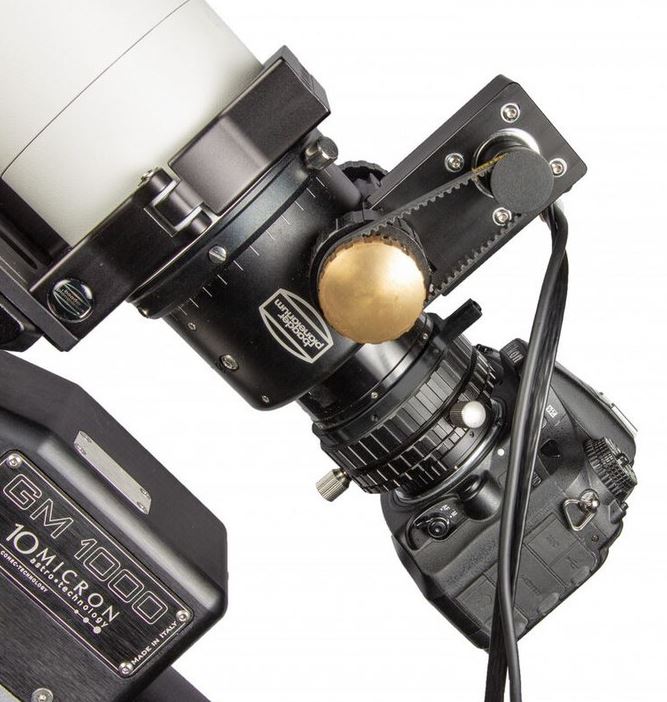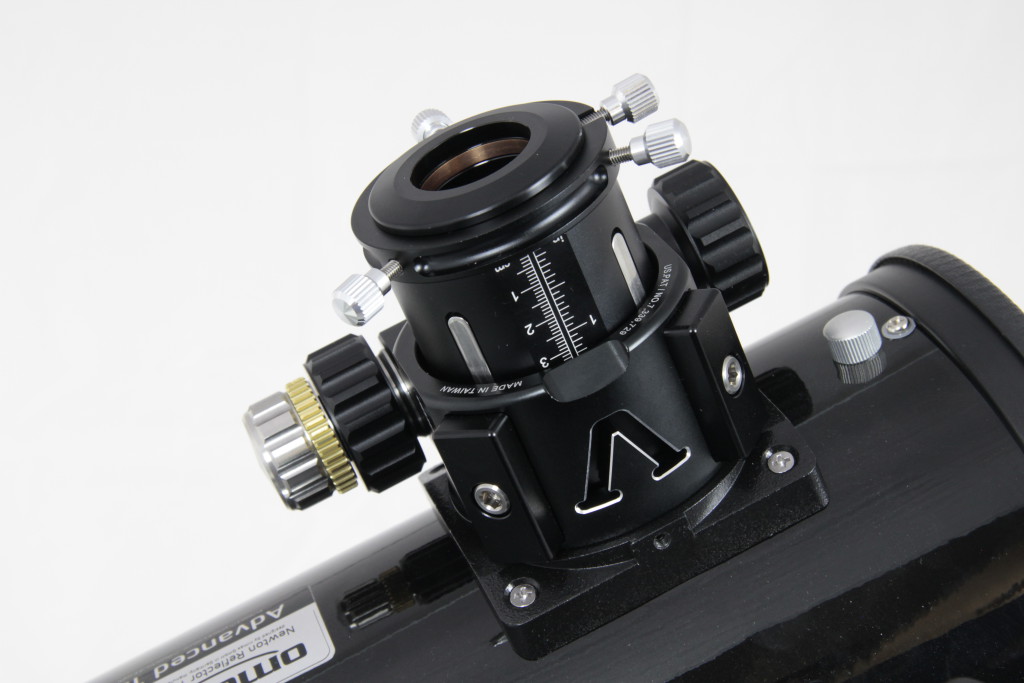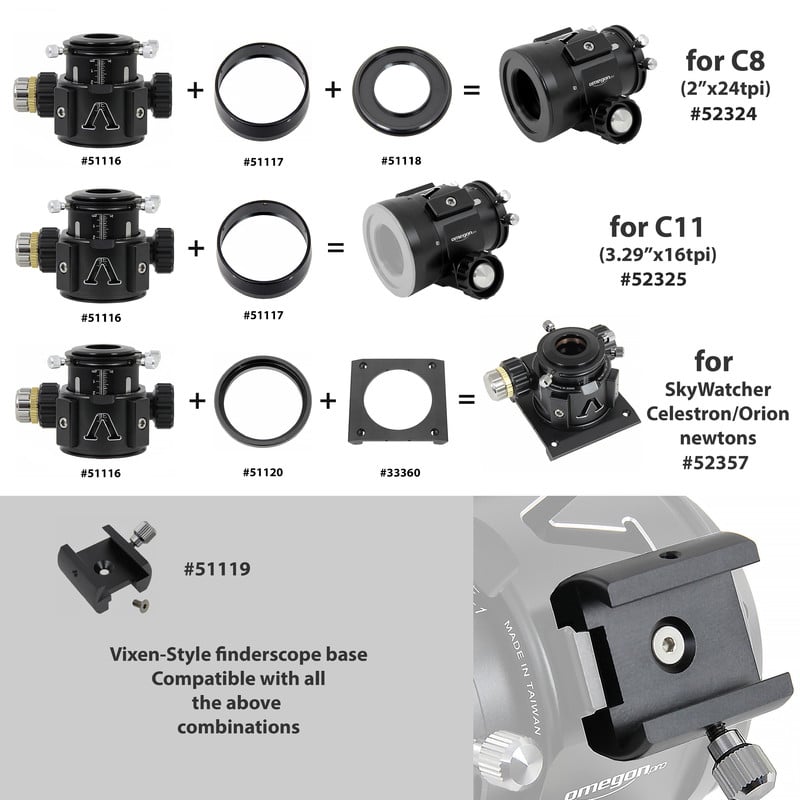A focuser is most likely the component, that is used most frequently and intensively on a telescope. How often do you plug in eyepieces, adapters and cameras? Yes, a focuser has to cope with quite a lot. But is it of sufficient quality? Many telescopes are designed for a very reasonable price – this can then be noticed on the focuser. Optimising the focuser has a tremendous effect at this point.
Having a good look at your current focuser quickly reveals whether you can achieve even better results with your telescope.
An interesting question: What is the purpose of a high-quality, accurately moving focuser? What should it be able to do?
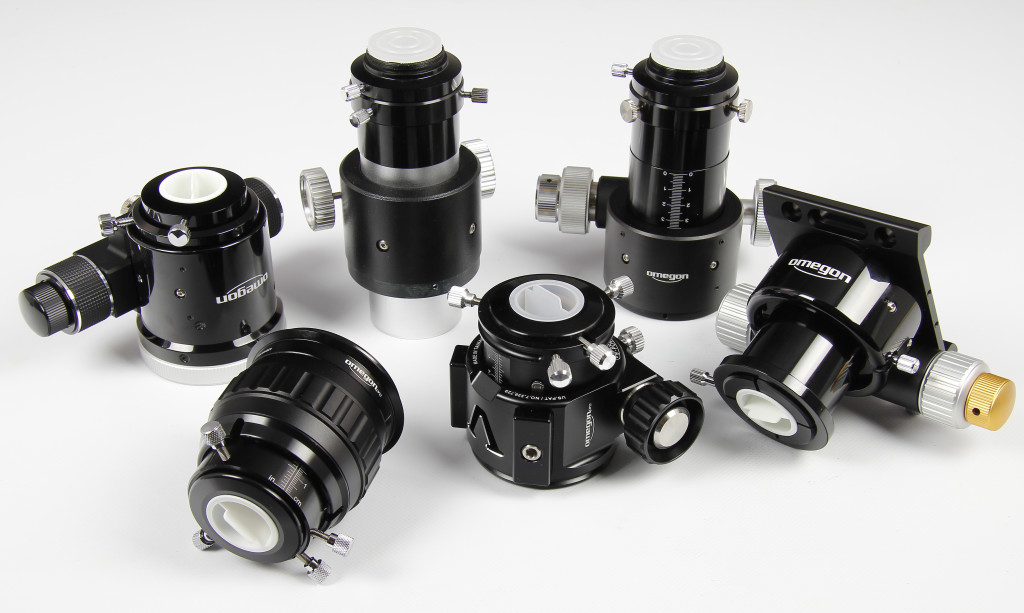
Five arguments for a good focuser
A focuser should
… be free of play.
You probably know this? You turn the focuser wheel, but the mechanical system rotates without any effect. And all of a sudden, it starts to move. On the one hand this is annoying, on the other hand it gives you the feeling of working with low-quality material.
…be free of any shifting.
You turn the focuser wheel, but Jupiter performs a rain dance and is jumping about in the eyepiece. Even worse in a camera. The object may even jump out of the field of view. Diagnosis: Shifting. This should be remedied as quickly as possible by using a good focuser.
…not bend when a camera is connected.
Unstable focusers sometimes lead to fatal results for your astro photographs. If the focuser tube bends, a photo may be sharp in one corner, but blurred in the other. Now, who wants such a result after an otherwise successful photo session. Further down, you find a list with a load capacity that specifies the maximum camera load, which should help to avoid such problems.
…have an accurate, fine focus adjustment.
Anyone enthusiastic about astro photography knows: Focusing the camera on an object in the sky is a challenge. This is much easier with a smooth running focuser or a 1:10 dual reduction. This allows you to adjust the focus in the range of tenths of a millimetre. This all to find the exact sharpness.
…not slip when using heavy accessories.
A heavy eyepiece may have a weight of up to 1 kg, camera equipment may even be heavier. In this case, it is an advantage to have a focuser that does not slip under a heavy weight.
Our product range includes some Omegon focusers, with which you can easily optimise your telescope and enhance its performance. For even more fun when star gazing. Especially the Omegon products of the series V-Power, Omegon Pro and the Omegon Hybrid Caryford Dual Speed are dedicated for these five wishes and fulfil them with high precision. The mentioned Omegon Hybrid Caryford Dual Speed has even been designed with a very low construction height. On very fast Newton systems, with e.g. f/5, one can reduce the vignetting and enhance the illumination.
You surely want to know whether the focuser matches your telescope. How high is the backfocus? What are the adapter measurements? How high is the load capacity of the focuser? This new list provides all information at a glance. You can immediately see, which focuser would suit you best.
